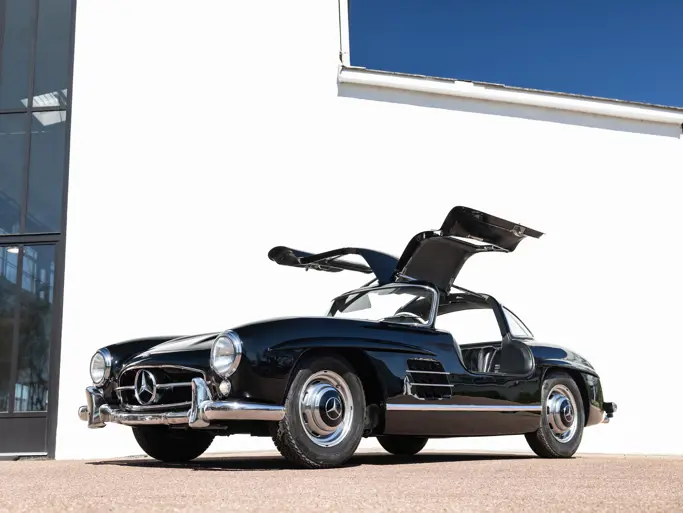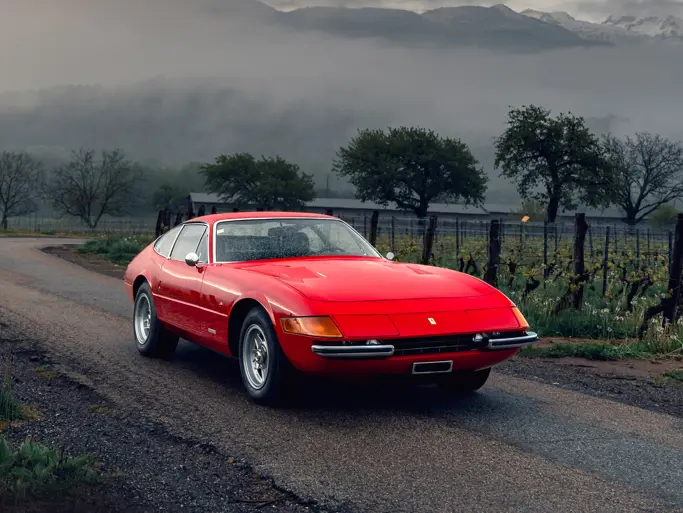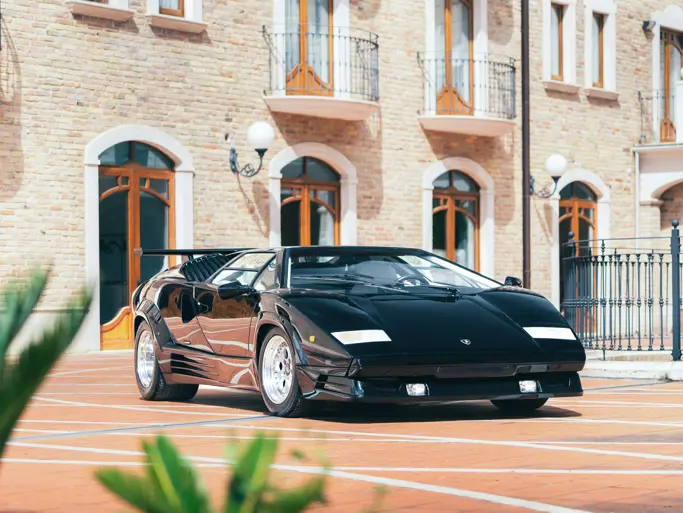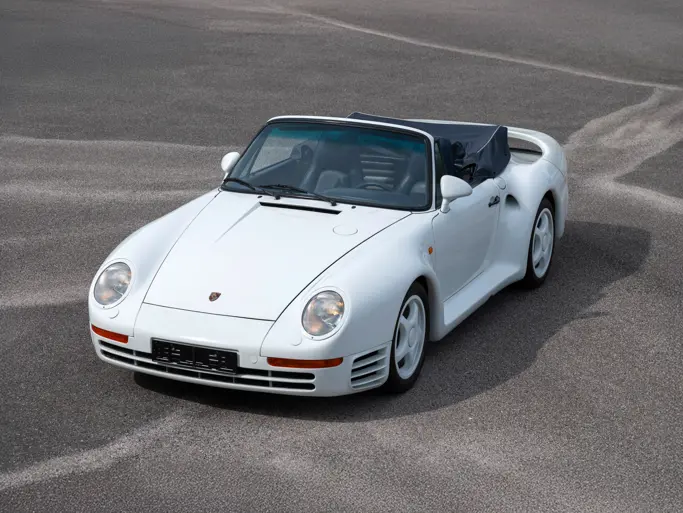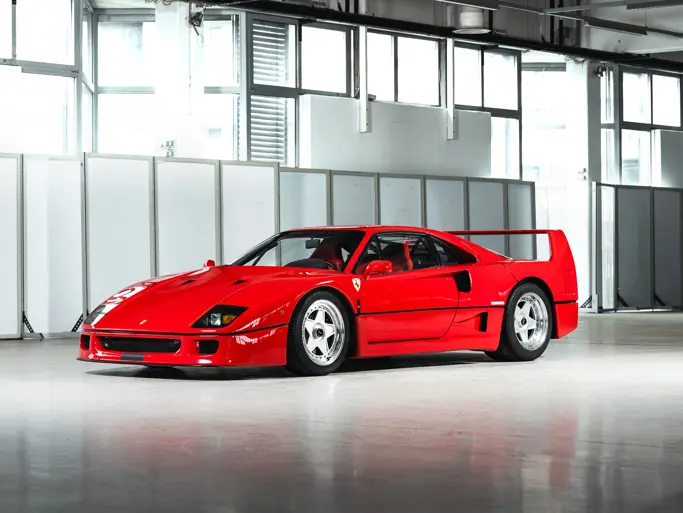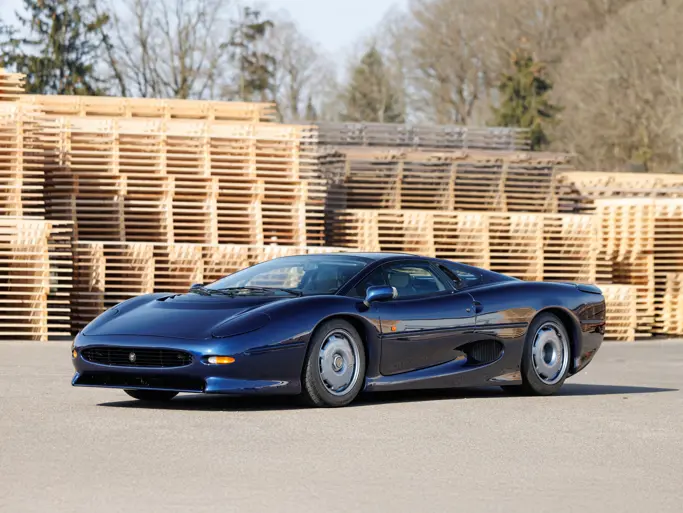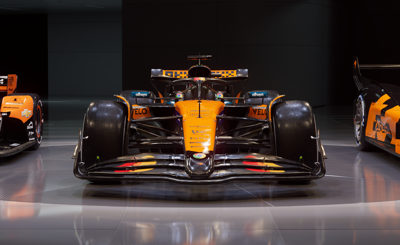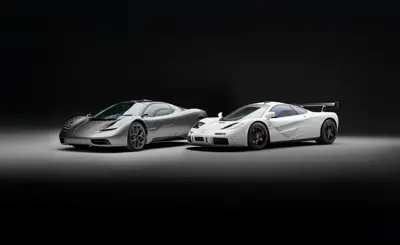Whether an icon of 1950s performance or a supercar pin-up of the 1990s, there’s little cooler than owning one of the fastest cars in the world—and you can take your pick of seven machines with ultimate bragging rights at our upcoming Milan auction on 22 May 2025.
From the early days of motorsport and giants of history like the Bentley Blower to more modern icons like the McLaren F1, there have been many metrics to determine a model’s place in the automotive hierarchy. However, it is the ultimate top speed of a production car that more often than not writes its name into the history books. But what does it take to win the title?
Essentially, it’s widely accepted that the rules are thus: the car must be built for a paying customer for use on the public road, in a street-legal specification the same as the one used for high-speed testing. As we’ll find out, that’s not always been the case—and has led to some controversy about how deserving some record breakers really are.
With our upcoming Milan auction on 22 May playing host to several record breakers—and a handful more that were knocking on the door—there’s never been a better opportunity to add to your collection. Join us for a roundup of the top fastest models.
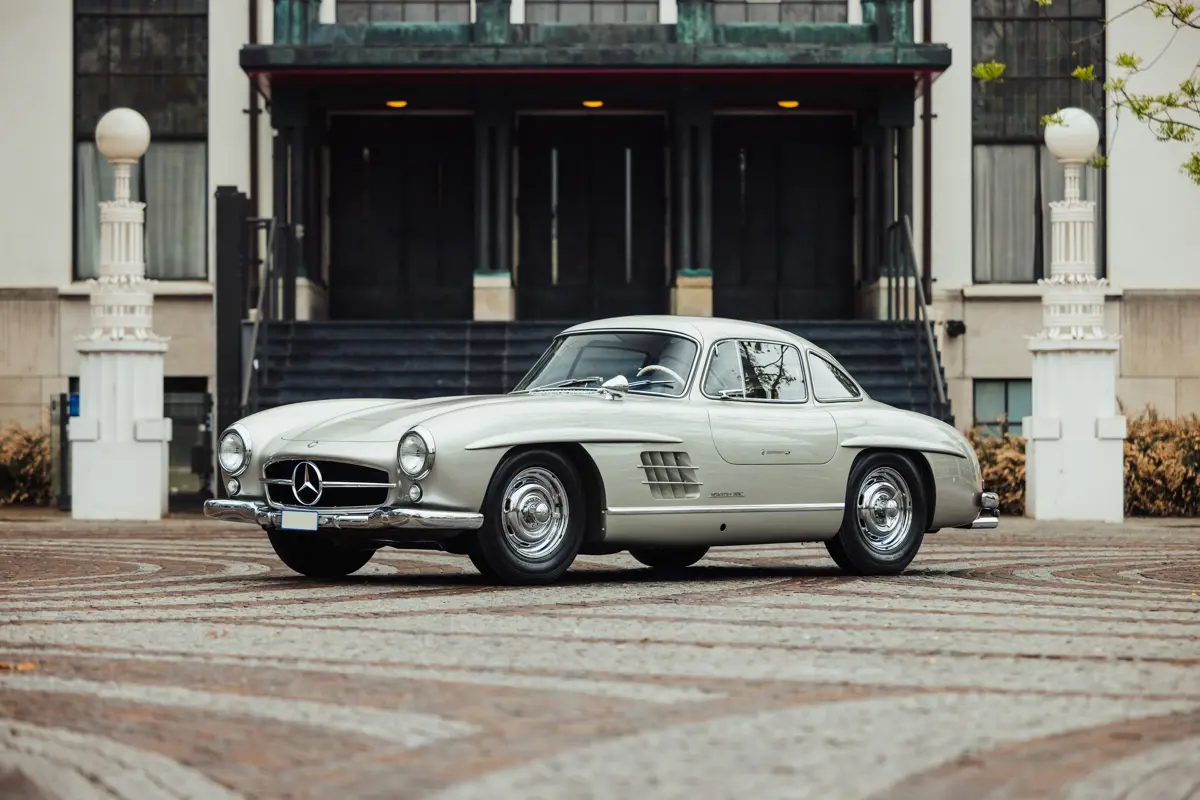
Mercedes-Benz 300 SL Gullwing
There’s an argument that the 300 SL was the world’s first supercar, and though mid-engined layout purists will bristle at the very thought, the performance figures speak for themselves. With a cutting-edge lightweight spaceframe chassis and envelope-pushing fuel-injected straight-six engine, the Gullwing’s performance was leaps and bounds ahead of the competition. With 215 horsepower on tap and a top speed in excess of 160 mph, the Mercedes-Benz was on a different level to all other contemporary road cars.
The two-way average speed test from Automobil Revue in 1958 didn’t get all that close to Mercedes-Benz’s claimed top speed, but the 150.7 mph recorded from one timed run was enough to give it the title of fastest production car in the world. More impressive still, by a margin of 25 mph over the previous incumbent, the Jaguar XK120.
Fancy a slice of the action? Our Milan sale brings you two chances to join the Gullwing set—an early 1954 Mercedes-Benz 300 SL Gullwing originally delivered to the USA, and a 1956 Mercedes-Benz 300 SL Gullwing that has been with the same owner since 1988. Which would you choose?
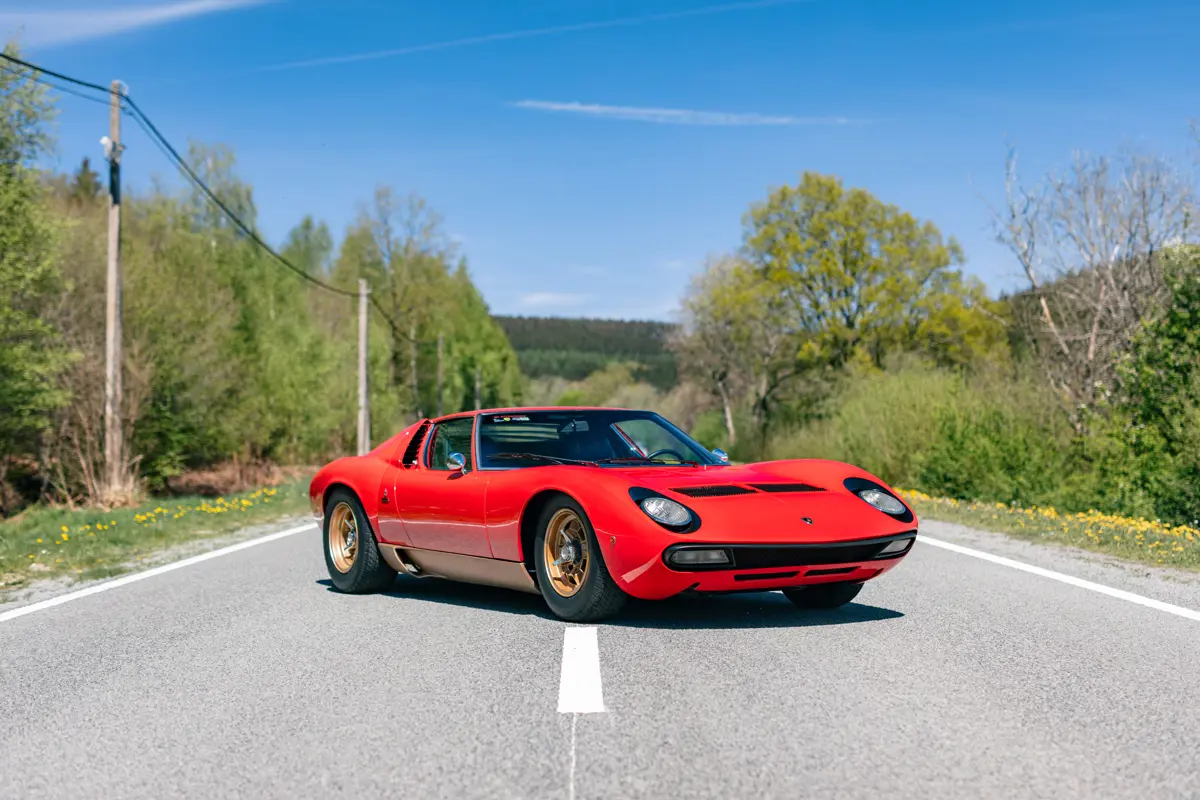
Lamborghini Miura P400 SV by Bertone
Though the Miura can’t take the credit for being the first mid-engined production car, it certainly elevated the layout to the automotive zeitgeist thanks to its dramatic Gandini-penned looks and sheer, unadulterated speed. If you discount the 300 SL as the first supercar, then there can be no doubt about the Lamborghini Miura’s credentials. Quite simply, it set the template for all that have come since, combining cutting-edge technology and unparalleled performance with simply outrageous styling. Just ask Gordon Murray, whose GMA T.50 has a 3.9-litre V-12 in recognition of Giotto Bizzarrini’s masterpiece in the Miura.
Prior to the Miura, the world’s fastest car was the AC Cobra 427, a car that was bare bones, raw, and raucous—little more than a race car for the road. The Miura managed to blend that performance with panache, and otherworldly looks that seemed as if it had travelled from the future.
The Motor tested a P400 in 1967, hitting 171 mph. It was enough to recalibrate what a performance car could and should be, and though Ferrari would soon strike back with a traditionalist front-engined car (see below), Lamborghini would wrestle back the fastest car in the world title in 1970, with Auto, Motor und Sport hitting 179.3 mph in a P400 S. It would hold that title for 12 years.
Star of the Milan sale is a 1971 Lamborghini Miura P400 SV, one of 150 examples built and an original and highly desirable ‘split-sump’ model that was first delivered to the United States. It is estimated at more than €3.2M and is offered at no reserve.
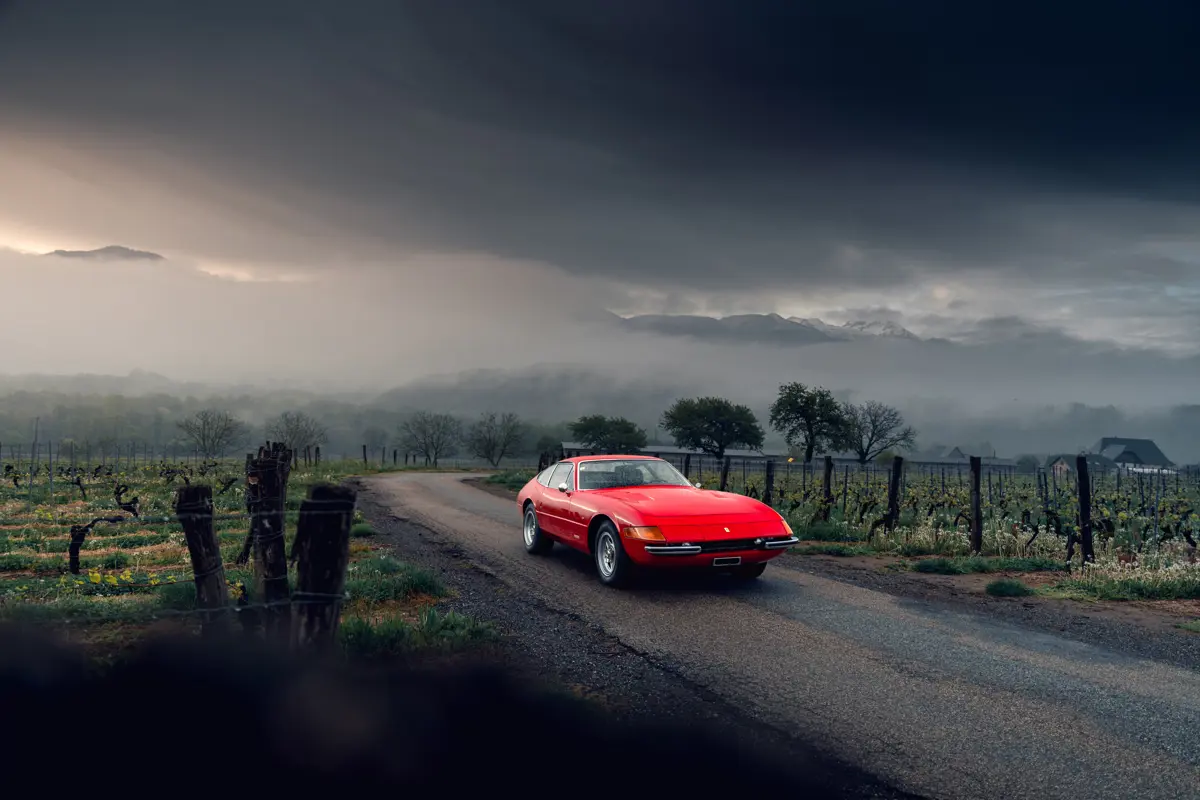
Ferrari 365 GTB/4 Daytona Berlinetta by Scaglietti
Enzo Ferrari was famously not keen on mid-engined road cars, and persisted with a front-engined flagship even in the face of competition from the game-changing Miura. His persistence was rewarded—albeit briefly—with the 365 GTB/4 Daytona. The car may have been seen as old-fashioned compared to the Lamborghini in some quarters, but there was no disrespect for the sheer heave the 4.4-litre Colombo V-12 could deliver. With 347 brake-horsepower, a kerb weight of 1,200 kilograms, and sharp, wind-cleaving styling courtesy of Pininfarina’s Leonardo Fioravanti, the Daytona could blast to 174 mph, making it the world’s fastest production car.
What made it all the more remarkable was that the Daytona wasn’t a highly-strung, unusable exotic—it was a fully-fledged grand tourer capable of covering continents in comfort and luxury. However, the pace of development, and a push for lower frontal areas in the name of aerodynamic efficiency meant that no front-engined car would again claim the fastest car in the world title, and the Miura soon won back its top-dog status.
Our 1972 Ferrari 365 GTB/4 Daytona Berlinetta by Scaglietti is a European-specification car finished in iconic Ferrari colours, and is estimated to sell for between €500,000 – €700,000 EUR.
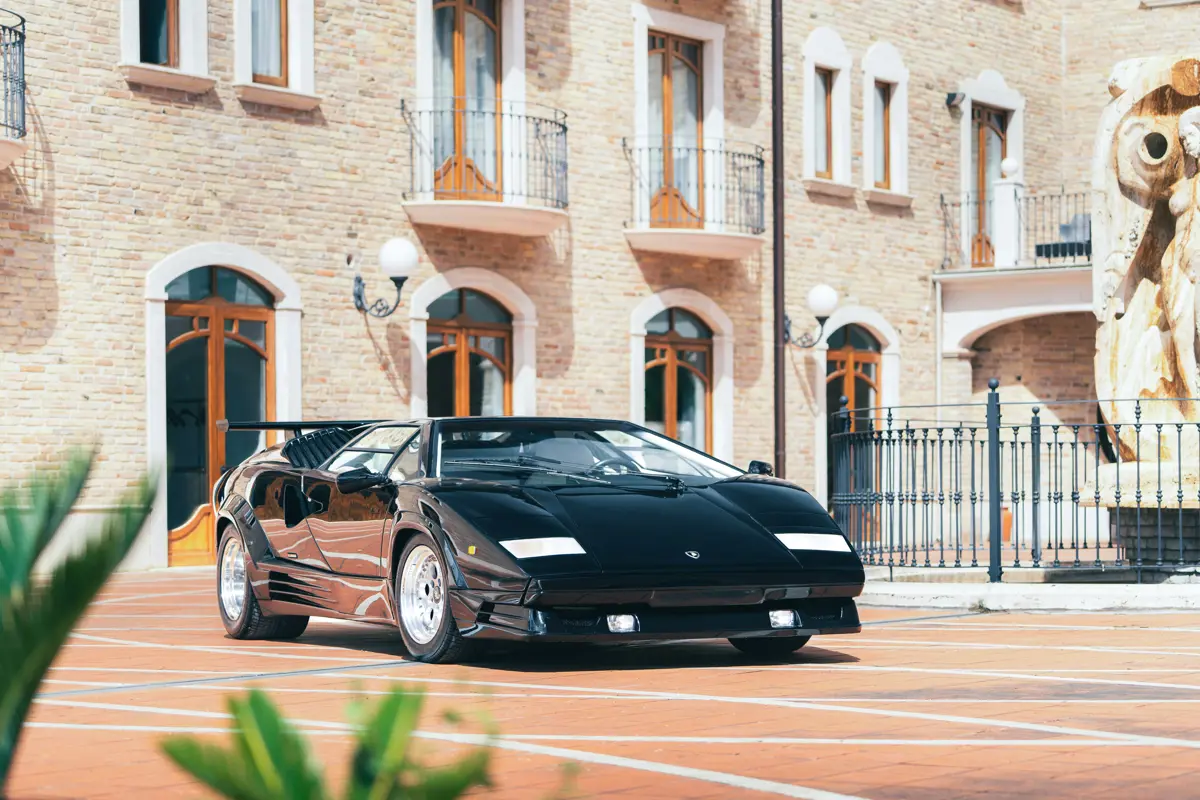
Lamborghini Countach 25th Anniversary Edition by Bertone
Lamborghini held the title of world’s fastest car for more than a decade thanks to the beautiful Miura, and beat its own record courtesy of the LP500 S in 1982. The Countach had always been fast, but the signature massive rear wing introduced with the LP400 S that had done so much to improve high-speed stability had robbed it of 10 mph at the top end. Lamborghini struck back with the LP500 S, which kept the body addenda but upped the V-12’s displacement to 4.8 litres while bumping total output to 370 brake-horsepower. Auto Moto und Sport took an LP500 S to 182 mph, setting a new record.
The Countach quickly lost its title to the Ruf BTR’s 190 mph run a year later, but Lamborghini fought back for 1985. This saw the launch of the LP5000 QV, which upped engine size to 5.4 litres. With four valves per cylinder and armed with six Weber carburettors, the improved engine provided a staggering 449 brake-horsepower. So equipped, Fast Lane magazine recorded a top speed of 190.1 mph, which was good enough to be listed in the Guinness Book of World Records—but the use of a factory-modified airbox raised questions about its record-breaking status.
As a later development of the 5000 QV, the 1989 Lamborghini Countach 25th Anniversary Edition by Bertone offered at our Milan sale may not be the fastest Lamborghini Countach of all time—but what’s a few mph between friends? It’s estimated at between €450,000 - €650,000 EUR.
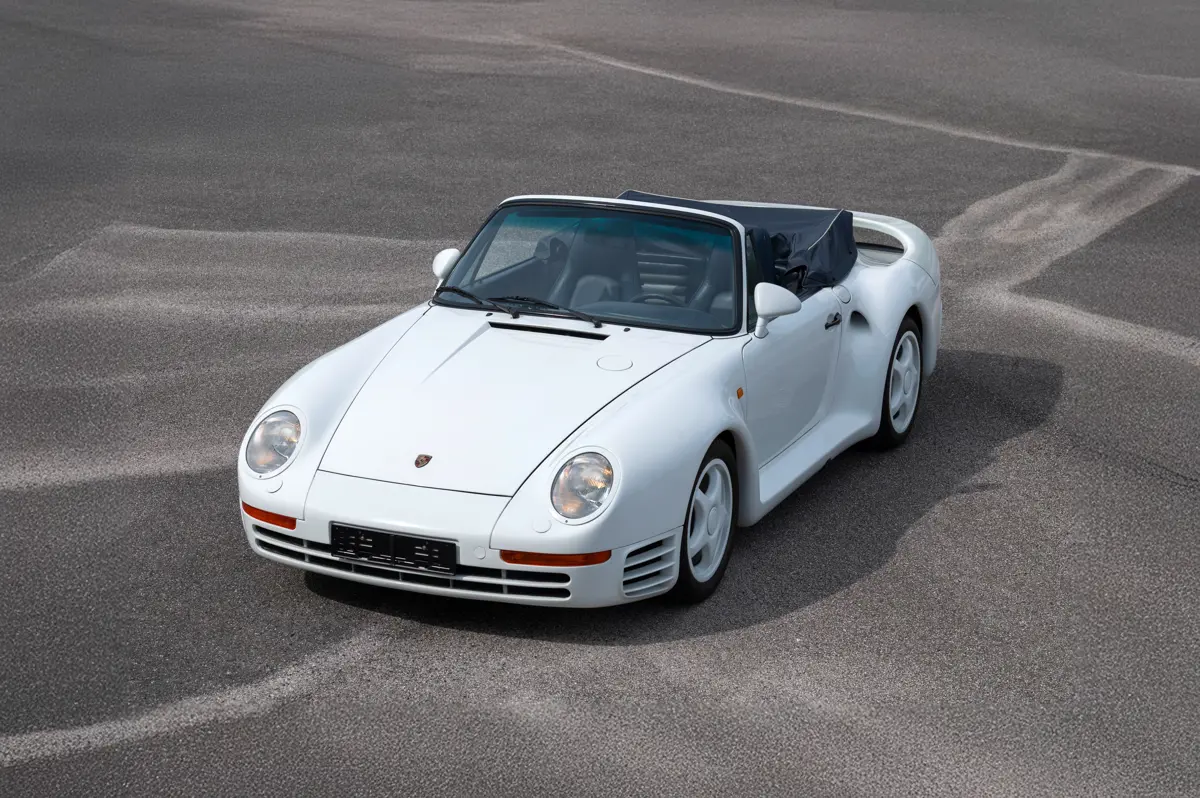
Porsche 959 ‘Speedster’
The 959 was about so much more than Group B. Though built ostensibly to compete, it was supposed to be the halo car that birthed the replacement for the 911 Turbo. In the end, the formula was cancelled and the hugely expensive 959—which cost Porsche double its sticker price to actually build—nearly killed the company, with the 911 Turbo replacement sacrificed to keep Porsche afloat as the world economy collapsed at the end of the 1980s and into the 1990s.
The genesis of the idea was the realisation that engineers had extracted about as much performance as they could from the air-cooled 911 Turbo. Water cooling was needed for greater power, while Audi had proved the effectiveness of four-wheel-drive in competition with its Ur-Quattro. The 959 was the car that ushered in much of this advanced know-how for Stuttgart, a technical tour de force with a Kevlar body, active ride-height, sequential twin-turbochargers, and hollow magnesium alloy wheels.
The results were spectacular, with Road & Track hitting 197 mph in a Komfort version, while the Sport model went one better with 198 mph—enough to give it the title of the world’s fastest car until the Ruf CTR achieved 212 mph at the Nardò Ring in 1988. The 959 S—essentially a 959 Sport with bigger turbos and a host of weight-saving measures—came close to reclaiming honours, reaching 211 mph courtesy of its uprated 508 brake-horsepower engine.
You might want to think twice before attempting any high-speed runs in the 1987 Porsche 959 ‘Speedster’ we have coming up for sale in Milan—it would certainly be breezy. A one-off creation built in the early 1990s, the ‘Speedster’ is one of the most visually appealing and spectacular variants of the era-defining supercar. It is estimated at between €1,100,000 - €1,500,000 EUR.

Ferrari F40
There are those who suggest that the likes of the Porsche 959 Sport and Ruf CTR test the boundaries of the phrase “production car”. After all, both were built to order, and production topped out before even double figures were hit—only 29 examples of both Ruf and 959 S ever escaping into the wild. Not so Ferrari’s genre-defining supercar, the F40, which proved so popular that more than 1,100 were eventually built.
Though Ferrari claimed a top speed of 201 mph for its angular masterpiece—making it the first road car to break that hallowed barrier—independent testing pegged it at 199 mph (courtesy of Auto, Motor und Sport). Nevertheless, Ferrari claimed the title of world’s fastest production car for themselves—and it’s a debate that still rages to this day.
The F40 was certainly built for the task. With Group B cancelled, the effort, time, and money expended on the 288 GTO Evoluzione programme, plus the knowledge gained developing the Lancia LC2, was put to good use. Unlike its rival from Porsche, which combined technological wizardry with supreme luxury, the F40 was a stripped-out brutalist masterpiece with performance at its core. Powered by a visceral 471 brake-horsepower, 2.9-litre, twin-turbocharged V-8 engine paired with a frighteningly lightweight chassis and cabin formed from Kevlar, carbon fibre, and aluminium, the spartan F40 was a breed apart—a fitting tribute to Enzo, being the final car to receive Il Commendatore’s stamp of approval.
Not all Ferrari F40s are created equal, and among the hierarchy of cars, those without catalytic converters and adjustable suspension—“non-cat, non adjust” to those in the know—are among the most sought after. The 1989 Ferrari F40 coming up in Milan ticks both those boxes, in addition to being restored by marque experts Carrozzeria Zanasi in 2021, and being awarded Ferrari Classiche Red Book certification a year later. It is estimated at between €2,400,000 - €2,800,000 EUR.
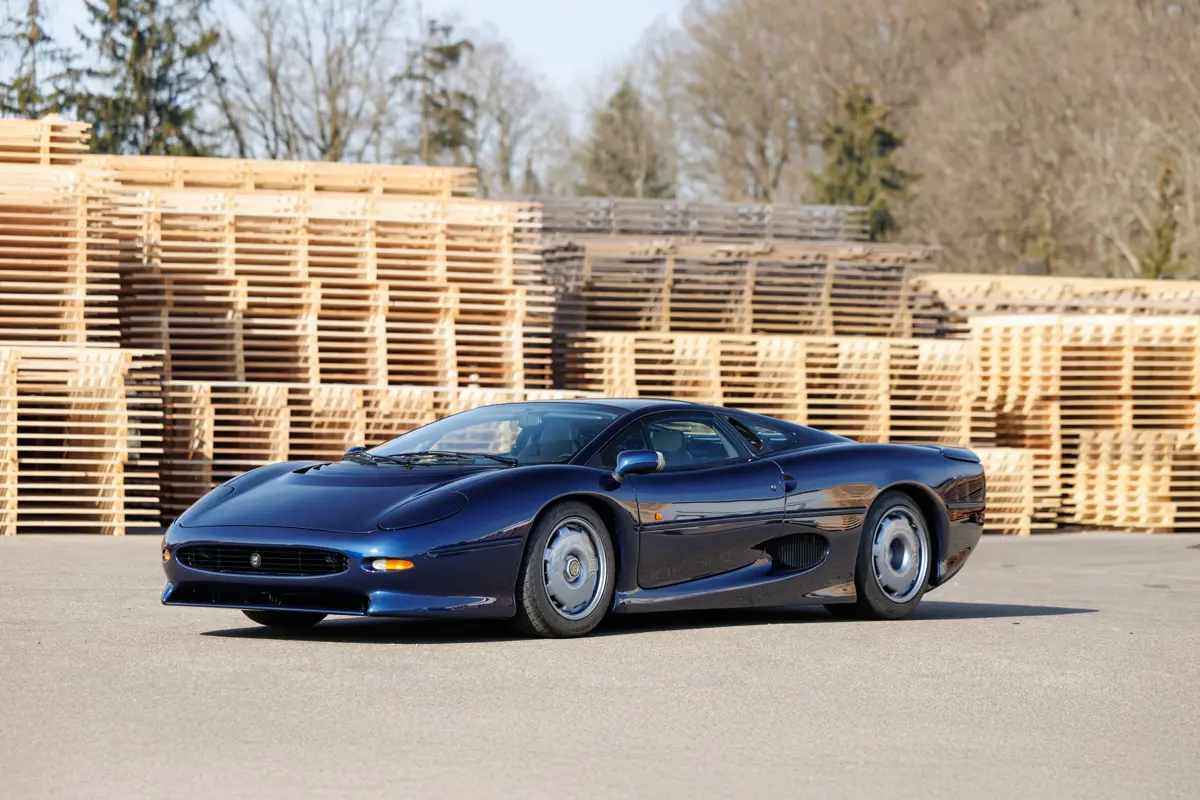
Jaguar XJ220
Among our group of record breakers, the criminally overlooked Jaguar XJ220 is without a doubt the best value of the bunch. Despite its futuristic spaceship-like looks, the XJ220 had a difficult gestation. The ambitious after-hours project was announced with a head-turning specification sheet that included four-wheel-drive and a mighty V-12 engine. However, launched in the teeth of an economic downturn, the production version boasted instead a twin-turbocharged 3.5-litre V-6. The changes prompted many to renege on their purchase and warehouses reportedly sat full of XJ220s for years—but while it lacked the allure of the concept car, the Jaguar was undoubtedly a monstrous machine.
With 524 brake-horsepower on tap, Martin Brundle took the slippery Jaguar to a top speed of 217.1 mph at the Nardò Ring in Italy, claiming the title of the fastest production car in the world—albeit with catalytic converters removed and the rev limit increased to 7,900 rpm, yielding an extra 51 brake-horsepower. In independent testing by Road & Track, the true production XJ220 reached 210.5 mph—still eye-wateringly fast, but bested by the Bugatti EB110 and the Ruf CTR.
Whether the XJ220 still counts as a world record holder will continue to be up for debate, but if you fancy testing the top speed yourself, there are few better ways to do it than aboard the 1994 Jaguar XJ220 coming up for sale in Milan. Finished in Le Mans Blue over a Smoke Grey interior, the car is just the 48th of 281 examples and has had just three owners in its life. It is estimated at between €375,000 - €450,000 EUR.



